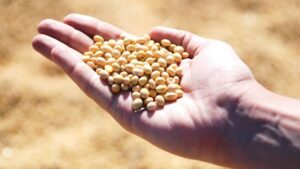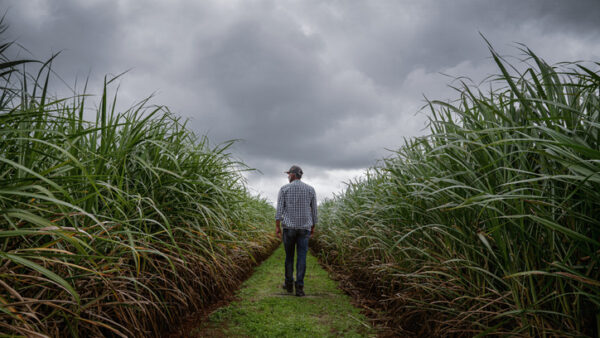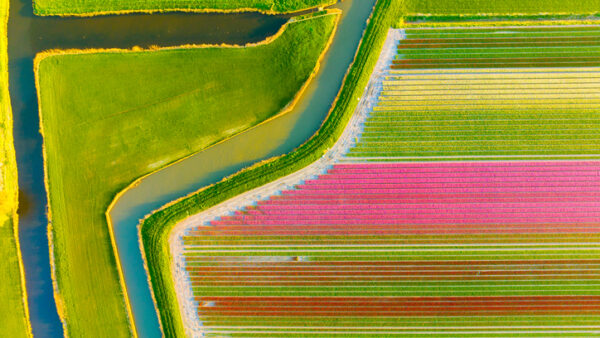The mind of a farmer revolves around more than just planting, fertilizing and spraying their crops. Increased production costs, supply chain disruptions and global conflicts greatly impact various factors that determine a farmer’s success each season.
It is necessary for not only farmers, but also seed experts, to be aware of challenges across the world that will inevitably impact the crop and to gear themselves with knowledge to help along the way.
Here are the agricultural highlights for the months of May and June 2022.
Crop Progress
May kicked off with corn planted at 14% and 3% emerged, shared the May 2 USDA Crop Progress Report. The previous five-year average was 33% for corn planted and 6% for corn emerged.
Soybeans planted came in at 8%, compared to the 13% previous five-year average. Spring wheat planted was 19% and 5% had emerged, with the previous average landing at 28% planted and 7% emerged.
The final progress report for the two-month period, released on June 27, showed that 92% of the 2021 corn acreage was planted this year. Farmers planted 96% of the 2021 soybean acreage and 100% of the 2021 spring wheat acreage.
Despite the increase in wheat production in June, the U.S. wheat production is predicted to come in as the second lowest in 20 years.
Global Wheat Prices
Wheat prices skyrocketed mid-May following the ban imposed by India on exports. The ban is a result of domestic food security concerns from a smaller than expected wheat harvest that came in at 10-15% lower than the 2021 record.
“Between them, Ukraine and Russia produce almost a third of the world’s wheat and barley and half of its sunflower oil. Russia and Belarus are the world’s number two and three producers of potash, a key ingredient of fertilizer,” shared a news release from the United Nations (UN).
Wheat prices have soared upwards of 60% this year, with futures traded in Chicago reaching 5.9% to $12.47 per bushel. This is the highest level in two months, according to Farm Policy News.
This ban added even more stress on wheat production with the impacts of the war on Ukraine and extreme weather at the forefront of farmer’s minds.
“Overall, global exporter quotes continued to escalate over the past month as weather concerns persisted across the Northern Hemisphere and as the ongoing war in Ukraine affected Black Sea shipments … U.S. quotes increased $32/ton as wet weather delayed spring wheat plantings and dry weather impacted winter wheat, which is rated just 29% good/excellent compared to 49% last year,” stated the USDA’s Foreign Agricultural Service (FAS) in their Grain: World Markets and Trade report.
Russia is projected to be the greatest exporter. The European Union is predicted to be the second largest exporter due to the crop from France, Romania and Germany.
Impacts of Inflation
Due to Covid-19, supply chain disruptions and higher labor costs, farmers have seen a greater rate of inflation.
Farm production expenses have increased 6% in 2022, following a 12% increase in 2021, according to the American Farm Bureau Federation and Jessica Schulken, principal at the Russell Group. The rate of inflation has made it increasingly difficult for growers to budget accordingly.
“In the past, we’ve always been able to budget and be fairly close on what those input costs are. But in today’s environment, with the rate of inflation going at such an astronomical rate, that makes it super difficult. We are getting caught off guard a lot of times on things that we think are going to cost a certain thing, and really costs a lot more than that,” Jared Balcom, president of the National Potato Council (NPC), says during an interview at the NPC Summer Meeting in Nashville, TN.
“We’re having to be very nimble and adjust how we grow crops and how we do different things. It’s not just inputs on crops. Everything’s getting super expensive and so it’s becoming very, very challenging for us to navigate that on a daily basis.”
Ending stocks for wheat were the tightest since 2013/14 for the June-May marketing year. The season-average farm price (SAFP) for 2022/23 is predicted at a record $10.75 per bushel.
Farmers are not naïve to the challenges 2023 may bring due to inflation. Purdue University’s Ag Economy Barometer for June 7 displayed a dip in the percentage of producers who believe their farm financial performance will improve.
“The percentage of producers who expect their farm’s financial performance this year to worsen compared to last year rose from 29% in April to 38% in May,” shared the report.
Inflation rates, however, do not have the same patterns as corn and soybean prices, according to the University of Illinois’ Department of Agriculture and Consumer Economics. Market demand and supply factors have a greater influence on corn and soybean price levels than inflation rates, meaning current rates do not necessarily signify a period of high commodity prices.
Are Fertilizer Prices Decreasing?
Boosted fertilizer costs and feed contributed to a $55 billion (14%) growth in 2022 farm production costs, but some officials believe the market may have flipped.
“While producers are unquestionably facing higher prices for inputs, it is less clear how high input prices are translating into increases in the cost of production. For example, some producers locked in input prices last year before the significant run-up in prices, and we expect that most producers will reduce input use in response to higher prices,” according to a report from Texas A&M University’s Agricultural and Food Policy Center (AFPC).
This change in market would be great news for farmers and could potentially allow them to cut production costs. Unfortunately, not all officials are optimistic that a decrease in fertilizer costs is on the horizon.
“Fertilizer accounts for 36% of a farmer’s operating costs for corn, and 35% for wheat. These elevated prices could have implications for crop production in 2022 and 2023,” shared the USDA International Agricultural Trade Report from June 30, 2022. “The Russian invasion of Ukraine has exacerbated the already limited fertilizer supply situation and has triggered import-export restrictions that will compound shortage concerns.”
While farmers might have been able to avoid the surge in fertilizer prices, there are no promises that 2023 agricultural production decisions will get any easier or cheaper.
“Although fertilizer prices began increasing in 2021, many U.S. producers were able to avoid the later surge in fertilizer prices caused by Russia’s invasion of Ukraine, because fertilizers for 2022 plantings were purchased in 2021. However, as the Russia-Ukraine war continues, the impact of fertilizer prices could likely take a heavier toll on 2023 agricultural production decisions, domestically and abroad,” added the USDA article.
Farm Lending Trends
Agriculture finance could be shifting as nontraditional forms of lending gain market share, offering more options for financing agriculture.
“Nontraditional doesn’t mean old or new (forms of lending),” said Jenny Ifft, an agricultural economist at Kansas State University. “Some types of nontraditional finance are the result of experience gained over decades of serving farmers, such as implement dealer finance, while others are startups that are testing new lending models.”
Nontraditional financing could be up to 25% of farm lending, according to Ifft and colleagues from Purdue University and the USDA’s Economic Research Service. Nontraditional lenders usually fall under one of three categories, according to Ifft: “vendor finance, high-volume branchless lenders and collateral-based lenders.”
“Currently, I’m not highly concerned about the risk associated with nontraditional finance. The nontraditional lenders I have interacted with and studied largely have robust business models. However, I am concerned that it is difficult for policymakers to track and measure some types of nontraditional finance, which is one area where I’ve focused my research,” she added.
In addition to financing alternatives, farmers contemplating nontraditional sources for lending need to think about interest rates, loan terms and long-term relationships with lenders through the instability of the farm economy.
“Between innovation from within agriculture, external capital (lenders) seeking to invest in agriculture, and the overall strong farm economy, right now there are many different lenders competing to serve production agriculture,” concluded Ifft.
Read More:
Global Wheat Production Predicted Lower
Trade Issues, Inflation and Future Farm Bill Weigh on U.S. Potato Growers
Farmer Sentiment Continues to Fall According to the Ag Economy Barometer













